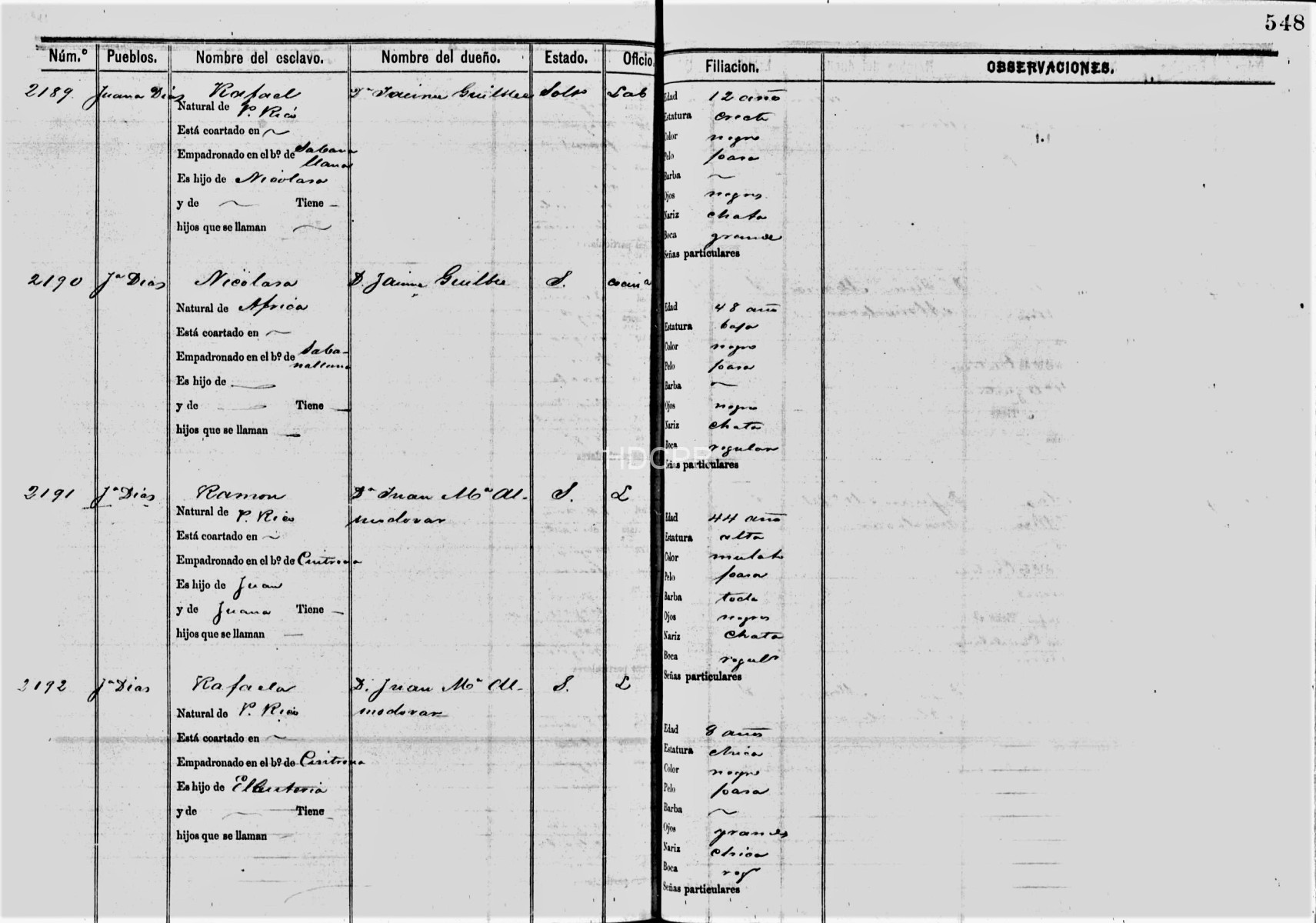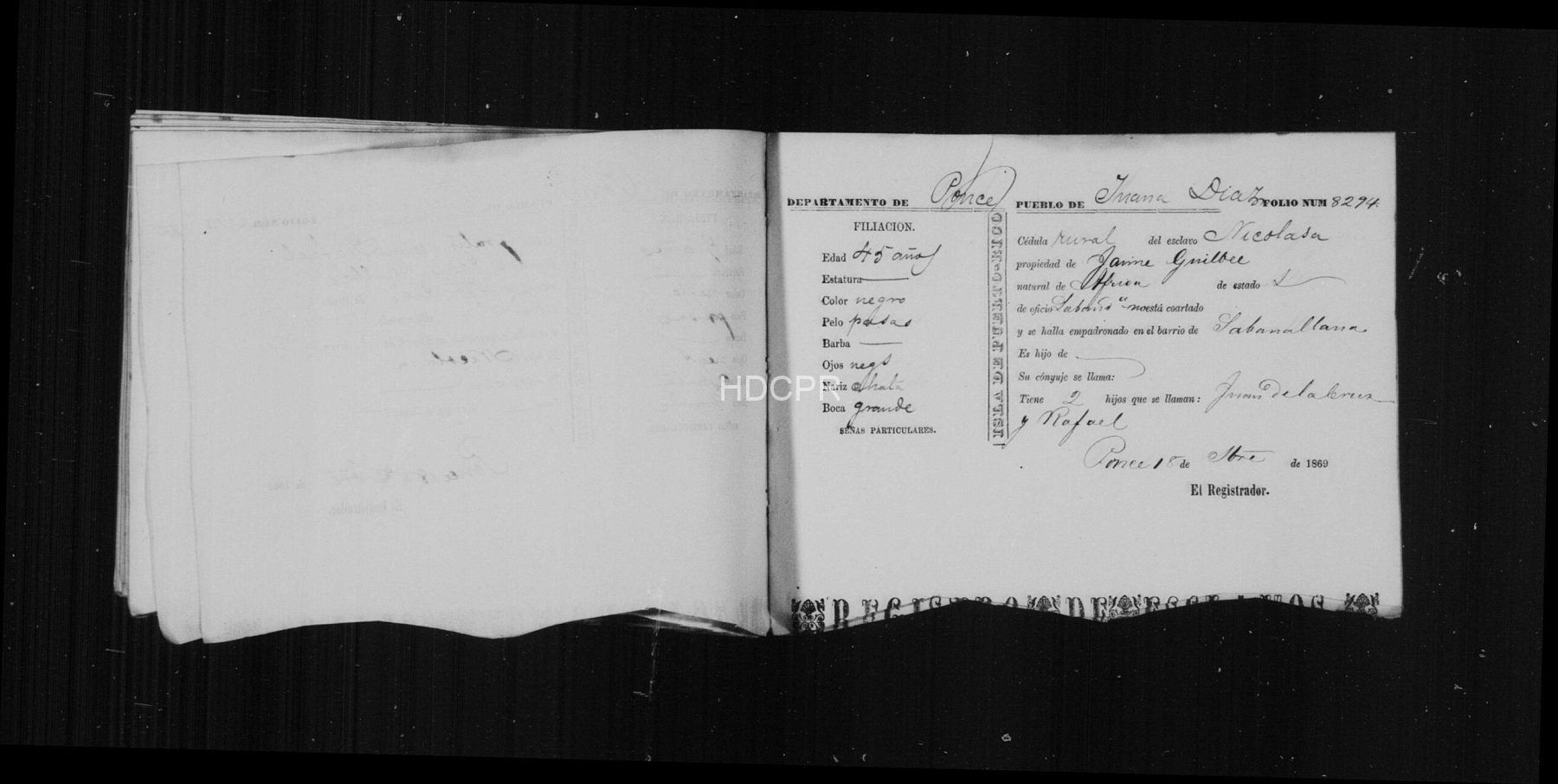1872 Slave Schedule by District
This record is relatively unique for Latin America as it was created the year before the government freed the enslaved people in 1873. The records helped the government compensate owners for each formerly enslaved person. Even so, slavery continued for several more years.
Below are the records by the district. It provides the name of the enslaved, a physical description, age, children, if any, and the owner’s name. Sadly, records for District 3 are missing, according to the archives.
District 1-4
The film pertaining to district 3 is missing and unfortunately not filmed.
District 5 & 6
An example of the Slave Schedule
These are three images I am sharing for a family that I recently did research on. I will be creating a separate post on the ancestors of the famous artist Sylvia Villard of Puerto Rico. She descends from several African ancestors. I was fortunate to be able to document one of her African ancestors. Her name was Nicolasa, and she had a son also born into slavery. See the images below in the gallery.




Responses to “TAINOS: Alive and well in Puerto Rico and the United States?”: Puerto Rico and the American Dream, Jalil Sued Badillo
Juan Says:
March 2nd, 2008 at 8:21 pm
I’m a latecomer in this discussion. Having ancestors buried here, I think, allows me to put my two cents in…I find that learning all about one’s various roots provides enjoyment plus belated justice to those whose stories would otherwise be untold and forgotten about (remember “Roots”). Possibly. a given people can deny links with, or be oblivious to, a referenced source, as another book I once read about others revealed to me long ago.
I would simply mention that in a book that I glanced over in the old Thekes in Plaza, I read for the first time that census data showed that up to the 1790s there was an essentially pure Indian town in the western end (possibly Maricao) which thereafter began to mix in with the rest of the surrounding population and data stopped being documented. In some other books I’ve read, this was never mentioned.
In addition, a Cuban I met once with Puerto Rican cousins possibly in the Mayaguez area (separated since a long-ago migration from Spain) reported learning that in the mid-1800s Indian slaves were brought from Mexico into Puerto Rico (for sale, obviously) before slavery was totally prohibited. Taino slavery was prohibited some centuries before. In Mexico, there had been a rebellion in the Yucatan at that time where Indians had been more resistant to the Mexican government than to the previous Spaniard rulers.
My mother recalled in her family in the west that some cousins’ maternal grandmother had been a slave on the finca of the old don whose eldest son eventually married her daughter. Their children’s features resemble greatly those of some south Mexican Indians if one looks at Pedro Ramirez Vasquez ‘68 book on Mexico’s National Museum yet no mention of this was ever made or known by family, just a one-time reference to the old don’s ‘illustrious’ people.
So, the fact is that, though this may be a minority contribution, it reveals a previously unknown element. True, we are what we are, composed of various contributions, but, in essence, what we feel we are, is what is important today. Such knowledge can simply allow us to feel a bit more empathetic to others faraway having their own current problems, as I have.